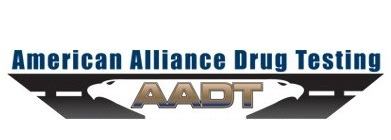Return-to-Duty Process After a Failed Test
Q: What is the process when an employee fails a drug or alcohol test?
A: When an employee “fails” a drug or alcohol test, the result is called “positive.” Positive means that there was a prohibited amount of drug or alcohol detected or it may be that the donor adulterated or substituted the specimen. A failed test may also be if a donor failed to appear for a test, left the collection site prior to completion of the collection process, was uncooperative with the requirements during the collection process, or failed to provide enough urine without an adequate medical explanation. In all such cases, the individual will be made inactive in AADT’s random testing pools.
To continue eligibility in AADT’s random testing programs the individual must be evaluated by a Substance Abuse Professional (SAP) and have completed the return-to-duty process. In the cases of employer mandated testing, re-enrollment will be based on the employer’s established company controlled substance and alcohol misuse policy.
In these situations it is the sole responsibility of the employer to contact AADT to re-enroll the employee.
“What to Do When” (Section 3-E in your AADT Compliance Manual)
Employee Receives a Positive Test Result
STEP 1. If a driver/employee’s test result is verified positive, the driver/employee must be immediately removed from performing safety sensitive functions. Follow your company policy regarding the consequences of a positive test result.
STEP 2. Furnish the driver/employee with the information of a Substance Abuse Professional (SAP) for evaluating and resolving problems associated with the misuse of alcohol and use of drugs, including the names, addresses, and telephone numbers of SAP and counseling and treatment programs.
AADT will furnish you with information of a SAP that offers providers nationwide and a monitoring program. Other listings are available in your local phone book or at the following web sites:
www.nsapn.com
www.saplist.com
www.findtreatment.samhsa.gov
www.sapreferralservices.com
www.sapaa.com
Please be advised if this is a DOT test there are specific qualifications that a SAP must obtain to qualify to evaluate the driver/employee.
This is extremely important information when seeking a SAP. If a driver/employee uses an unqualified SAP the program will be invalid for DOT purposes and he/she will remain ineligible to return-to-duty.
STEP 3. If the driver/employee is terminated from your company employment, collect his/her ID card and forward it to AADT with the completed Form 110 located in Section 6.
STEP 4. If you want to retain the driver/employee, he/she is required to enter into an Employee Assistance Program (EAP). (Be advised in the case of a non-mandated testing program, it is up to the employer’s discretion but it is highly advised that the same procedure as the DOT is followed). Payment arrangements are between the employer and the employee. DOT requirements do not mandate the employer to be responsible for payment. Rehabilitation may be provided through; a public agency, the employer or a person under contract with the employer, the driver’s health insurance program or the reasonably accessible sole source.
STEP 5. The driver/employee is required to be evaluated by a qualified SAP, at which time the SAP will determine the rehabilitation program prescribed.
STEP 6. Once the driver/employee has completed the rehabilitation program prescribed he/she must once again be evaluated by the SAP to determine that the rehabilitation program prescribed was properly followed.
STEP 7. The driver/employee is required to test for a return to duty test, drug tests are to be direct observed. Once the valid negative result is received the driver/employee may return to safety sensitive functions.
STEP 8. Submit the Form 110 to AADT to re-enroll the driver/employee in the company’s testing program. AADT will require documentation of the driver/employee’s completion of the return to duty process. (e.g negative return to duty test result(s), follow up testing requirements)
STEP 9. The SAP will direct the driver/employee to unannounced direct observed follow-up drug and/or alcohol testing administered by the employer. The number and frequency of such follow-up testing shall be as directed by the SAP, and consist of at least six tests in the first 12 months following the driver’s return to duty and shall not exceed 60 months.
The employer may direct the driver to undergo return-to-duty and follow-up testing for both alcohol and drugs, if the SAP determines that return-to-duty and follow-up testing for both alcohol and drugs is necessary for that particular driver. The SAP may terminate the requirement for follow-up testing at any time after the first six tests have been administered, if the SAP determines that such testing is no longer necessary.
STEP 10. The employer may use a provider to monitor the driver/employee’s follow up program but it remains the employer’s sole responsibility to assure that all of the driver/employee’s follow up program requirements are met and within the time allotted.
If you should have any further questions regarding compliance with DOT drug and alcohol regulations, contact AADT staff during business hours.
NOTE: We recommend that your company policy include verbiage regarding who is responsible for payment of the Employee Assistance Program (EAP), Return to Duty (RTD) and Follow Up (F/U) tests in the case where the donor has tested Positive and you decide to employ them as a driver once again.



